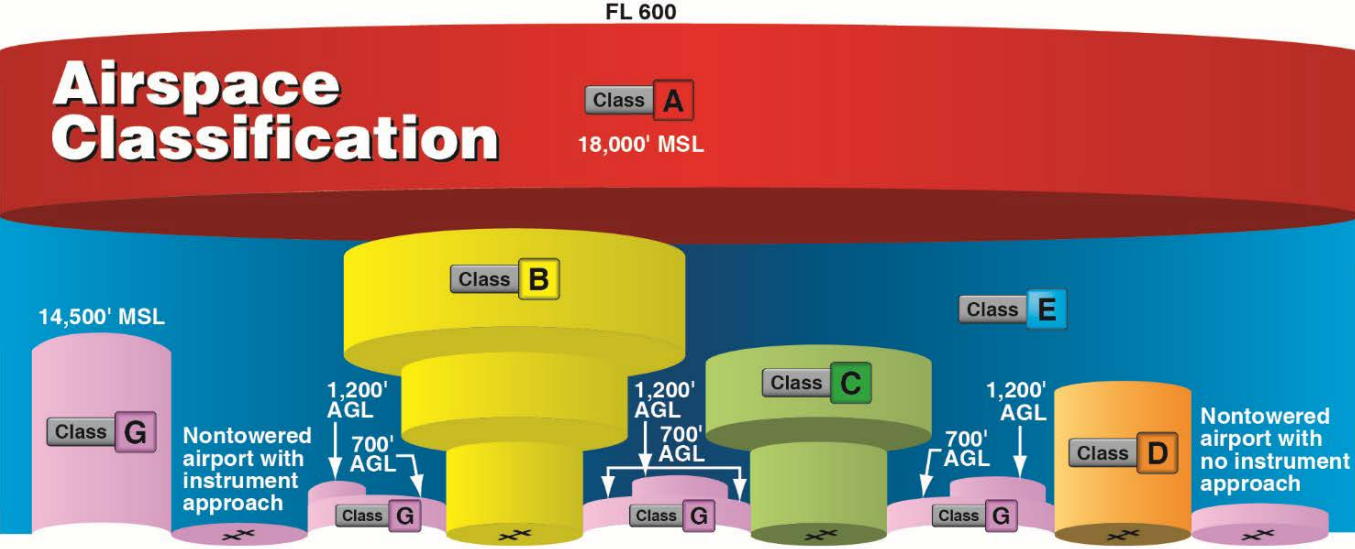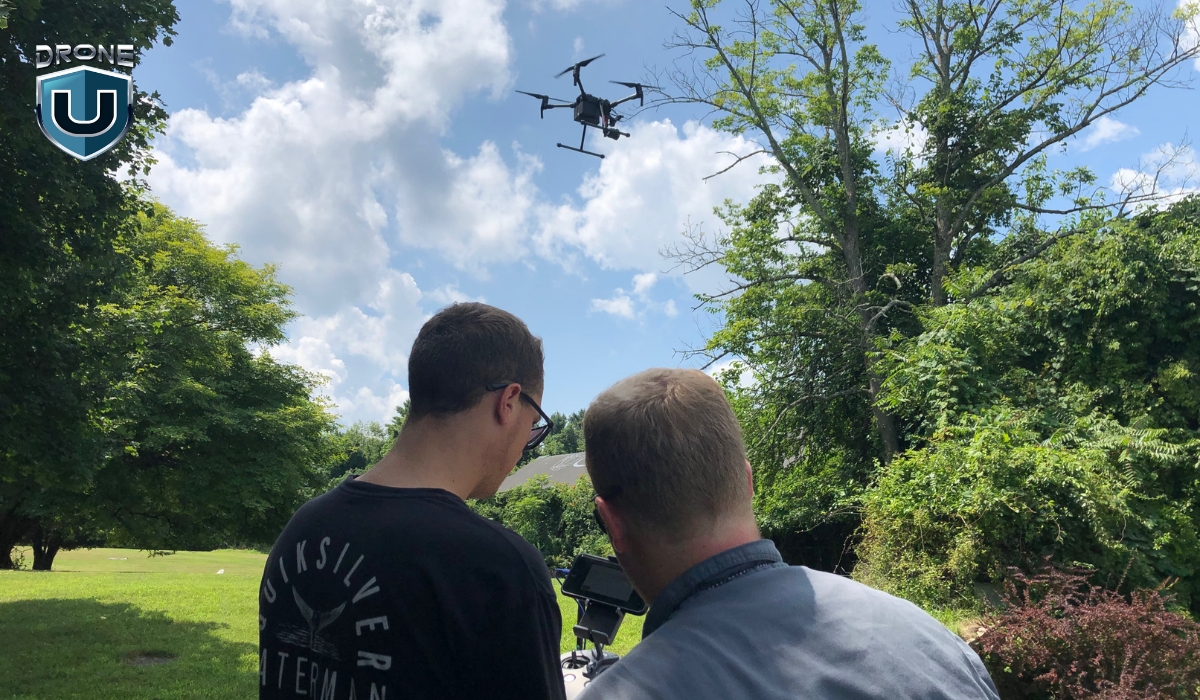
Have you ever wondered what happens in Class A airspace, far above where drones fly? As a drone pilot, your focus is usually below 400 feet, navigating controlled zones and avoiding no-fly zones.
However, commercial airliners cruise under strict air traffic control in Class A airspace.
While it may seem distant from your operations, understanding this high-altitude airspace gives you a deeper insight into how the skies are structured and why every layer plays a crucial role in aviation safety.
So, what exactly is Class A airspace? Why does it matter to drone pilots? And could drones ever have a place in this high-altitude domain? Let’s dive in.
What is Class A Airspace?

Class A or Alpha airspace is the most controlled airspace in the United States. This class is often referred to as Positive Controlled Airspace. In this airspace, all aircraft must operate under Instrument Flight Rules (IFR) and follow ATC instructions.
Air Traffic Control (ATC) has complete authority over positively controlled airspace, ensuring the safe and efficient movement of aircraft. This airspace is primarily used by jets, military aircraft, and other high-altitude aircraft.
Where is Class Alpha Airspace Located
Class A airspace extends from 18,000 feet Mean Sea Level (MSL) up to 60,000 feet (FL 600), including the airspace overlying the waters within 12 nautical miles of the coast across the USA.
In aviation terminology, altitudes at and above 18,000 feet are referred to as a Flight Level (FL), which helps standardize altitude measurements for high-altitude flights.
It doesn’t matter whether you’re in California, Texas, or Vermont; once you hit 18,000 feet, you’re in Class A airspace.
Class A airspace isn’t shown on sectional charts for drone pilots because it’s far above the altitude where most drones can fly.
To understand elevation and airspace layers in a better way. Let’s walk you through an example:
Open a sectional chart near Denver, Colorado. The city sits at roughly 5,280 feet MSL.
Since Class A airspace starts at 18,000 feet MSL, that means it begins about 12,700 feet above ground level over Denver.
The same rule applies nationwide—Class A always begins at 18,000 feet MSL, no matter the terrain elevation beneath it.
Class A Airspace Requirements for Drone Pilots

You can’t fly a drone in Class A airspace under Part 107. The FAA clearly states that drones flying under Part 107 must operate below 400 feet AGL (above ground level), and Class A airspace starts way up at 18,000 feet MSL.
So, for most drone pilots, Class A is off-limits.
However, if you’re exploring advanced operations, like long-range UAS flights, high-altitude scientific research, or you’re part of a public safety agency, there’s more for you to consider.
Class A Airspace Weather Minimums
In Class A airspace, all aircraft operate under Instrument Flight Rules (IFR). That means weather minimums concepts like “3 miles visibility” or “cloud clearance” don’t apply here the way they do in Class B Airspace, Class D Airspace, or Class G Airspace.
Why? IFR pilots don’t rely on looking out the window.
They fly using instruments and directions from ATC. That’s why the FAA doesn’t publish traditional weather minimums for Class A—it’s a cloud-level, visibility-independent environment.
Class A Airspace Speed Limits
In lower altitudes, drone pilots and manned aircraft have speed limits. But in Class A, there’s no blanket speed limit. That’s because high-altitude aircraft fly much faster—commercial jets often cruise between 460–575 knots at these levels.
Why Does Class A Airspace Matter to Drone Pilots?

If you’re not flying your drone in Class A airspace, why does it matter?
For drones, it doesn’t. However, understanding it can give you valuable insight into the following:
1. Understanding the National Airspace System (NAS)
Knowing how the NAS is structured helps you become a more informed and responsible drone pilot. The airspace above you is highly regulated, and recognizing these boundaries enhances your overall airspace awareness.
2. Impact of Manned Aviation on Drone Operations
Aircraft in Class A airspace include commercial airliners, business jets, and military aircraft traveling at high speeds. While drones won’t encounter these aircraft directly, the traffic in Class A can affect air traffic control decisions, Temporary Flight Restrictions (TFRs), and other operational considerations that trickle down into lower airspace classes where drones do operate.
3. Future Drone Operations in High-Altitude Airspace
With advancements in unmanned aviation, high-altitude drones and urban air mobility (UAM) are on the rise. Companies are developing long-endurance UAVs for communication, weather monitoring, and surveillance missions that could one day operate in Class A airspace. As regulations evolve, drone pilots may see new opportunities in high-altitude operations.
Conclusion
As a drone pilot, knowing how the national airspace system works gives you an edge. It helps you fly safer, plan better, and take the same precautionary measures as manned aviators.
The skies above us are carefully structured to keep manned and unmanned aircraft operating safely.
After all, being a great drone pilot isn’t just about sticking to the rules. It’s about seeing the bigger picture—how all the layers of airspace fit together and why they matter.
Curious about other types of airspace and how they affect drone flights? Explore our guides on Class B, Class C, Class D, and Class E airspace to deepen your understanding of where and how you can fly legally and safely.
Ready to level up your knowledge and unlock new flying opportunities?
Check out our drone pilot training programs here.
Frequently Asked Questions
1. Can Drone Pilots Fly in Class A Airspace?
Not without special FAA authorization. If your operation somehow involves flying in Class Alpha airspace. For example, for a high-altitude weather drone or a defense-related UAV, you’ll need to apply for a ‘Certificate of Waiver’ or operate under a ‘Special Airworthiness Certificate.’
2. Is a waiver even possible for drone operations in Class Alpha?
Yes, a waiver is possible, but it’s extremely rare and comes with very strict conditions. Under 14 CFR § 91.135, the FAA governs operations in Class A airspace, and this requires months of planning, ATC clearance, and formal coordination with the FAA.
3. How is Class Alpha Airspace Different from All Other Airspace?
Class Alpha airspace differs from other airspace classes in several key ways. It uses pressure altitude instead of true altitude, and altitudes are expressed in flight levels (like FL180) rather than feet. Only IFR-certified pilots can fly in it, and all operations require an ATC clearance to a specific flight level. Unlike Class B, C, or D, Class A airspace isn’t depicted on sectional charts because it’s uniformly defined nationwide, starting at 18,000 feet MSL.






